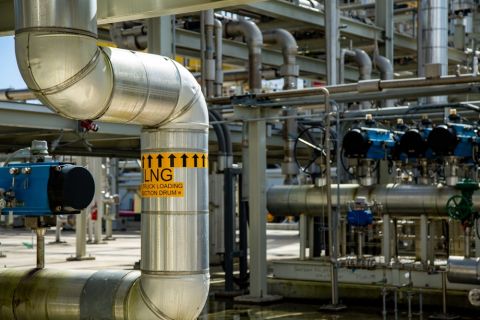John Lineham drilled the first commercial oil well in western Canada in what is now Waterton Lakes National Park in 1902. Exploration and production rapidly took off and by 1914 Alberta's first large field was in full spate at Turner Field. Given the long history and declines seen over the years, it is fair to describe the Western Canadian Sedimentary Basin as mature. However, it is far from exhausted, and new techniques and technology are helping E&Ps unlock ever more hydrocarbons from the basin.
Kim Davies, CEO of newly formed Terrex Energy, observes: "If you look at Canada, it's a mature basin. In the last 30 years people have written it off several times, but technology keeps reinventing it. We see EOR as being a continuation of that, bringing that technology into the mature basin in order to obtain the additional oil that's already there."
Harris makes the case for EOR: "Not only is it logical because of oil prices and evolving technology, but also because of the state of the world's oil reserves. In a typical pool you develop it and you get 15% of that oil. Even after you do a waterflood you take another 10% to 15% out. What about that other 75%? We are using processes to go and get a portion of that 75% that's left. You think about all the mature basins left in Canada and there is a huge volume of oil still in place."
The company acquired its Strathmore property for just $650,000 in 2010. "There were 20 million barrels of original oil in place," says Harris. "It's produced 5 million to date. All the drilling was initiated in the late 1980s, and they started the waterflood fairly quickly. It peaked at around 1,400 BOE per day before it went into decline. Around 1999 they did some additional activity and in particular drilled a horizontal well. It started producing again around 500 BOE per day for a short time and then declined again."
"Every reservoir is unique and you want to determine the process that makes the most sense," says Terrex CFO Norm Knecht. "We're doing a chemical flood at Strathmore. Essentially, chemicals "scrub" the reservoir. If you put chemicals down the injector well, they scrub the rock and loosen the oil. When you follow up with water, it moves all that oil into the surrounding wells."
Operation costs for EOR schemes can be high, but E&Ps avoid exposure to exploration risk and enjoy royalty incentives in the western provinces. Harris explains: "The operating costs are almost twice as much as usual because of the additional complexities of the chemicals and equipment. But these projects take about two or three years to reach their peak. They're long-life reserves, with only about a 10% decline compared to a 70% decline with a Cardium well."
Terrex is looking to extract an additional 15% of Strathmore's 20 million barrels in place. Not bad for a initial $650,000 investment.
Canadians have been surprisingly slow to adopt EOR, especially so in the case of juniors. Harris believes that the oil sands is like a brain drain, taking up the attention of Calgary's brightest and distracting them from working on EOR solutions. "The technical resources have gone so heavily into the oil sands that there's not a lot of people who can do this," he says.
The fact that EOR projects have longer payout periods and can struggle to attract investors also goes some way toward explaining the slow uptake. "For a project like this, it'll take a year before you see any results, which is very difficult for a little company to go out and sell," says Harris.
CO2 flooding is another form of EOR that has significant potential to revitalize the WCSB. Saskatchewan took an early lead in the field at Weyburn, one of the world's largest CO2 floods. Weyburn Field, which first produced oil in 1954, started receiving CO2 from a North Dakota coal gasification plant in 2000.
Weyburn is a 1.4-billion-barrel reservoir from which approximately 370 million barrels had been extracted using primary and secondary recovery methods. In 2004, Cenovus started the CO2 flood with the intention of recovering a further 155 million barrels and locking 30 million tons of CO2 in place. By 2010 production had reached 28,000 BOE per day.
Adjacent to Weyburn, and sourcing CO2 from the same source, is Apache's Midale CO2 flood. Midale produced 154 million barrels of its estimated 515 million barrels using primary and secondary recovery methods. Apache is injecting over 10 million tons of CO2 to recover a projected 67 million barrels.
Weyburn and Midale are subject to the longest-running independent carbon capture and storage (CCS) program in the world. The Petroleum Technology Research Center's $85-million, 11-year research project at Weyburn-Midale has been taking air quality samples across the area and monitoring pressure levels to assess the effectiveness of the CO2 flood and to establish if any of the gas has leaked to the surface. Despite recent claims that CO2 leaked to the surface and killed animals at a local pond, the PTRC has found no evidence of seepage in 11 years of observation.
Understandably, the western provinces are keen to encourage CO2 floods. Not only does the process increase production rates, and thus royalty revenues, it also helps the provinces to lower carbon emissions and allows them to claim a leadership position in North American environmental politics. Weyburn-Midale alone captures more CO2 than is emitted by Saskatchewan's entire housing stock.
Both Saskatchewan and Alberta have committed large amounts to help foster CCS projects, which will almost certainly be directed into CO2 floods given the economics. Alberta's carbon tax is projected to raise $2 billion earmarked for CCS. To accompany the funding, Alberta has set out a clear pathway to establishing a CCS legal framework. In this regard it is probably the most advanced jurisdiction in the world. An expert panel has been appointed to advise the government on liabilities and associated CCS issues as part of the Regulatory Framework Assessment. The panel is due to report in 2012 and binding regulation should be enacted within the year.
CO2 floods are a proven form of EOR. The key limiting factor is the availability of pure CO2. Coal and gas-fired power plants do not emit pure CO2 and stripping out the "pollutants" from the power plant exhausts is extremely expensive. The North West Upgrading integrated heavy oil upgrader and refinery is configured to produce pure CO2 and will be plumbed into a brand new CO2 distribution system.
North West Upgrading chairman Ian MacGregor explains the challenges of capturing CO2 and how the company is planning to capitalize on its capability to produce a pure form of the gas: "CO2 is a revenue-producing product for us, which is absolutely unique. The costs of extracting nitrogen from a carbon stream make all schemes associated with electricity power plants economically impractical. The first step in any successful carbon capture process is getting pure CO2 and then dealing with it in an economic way.
"Alberta is the best place in the world to do this because we've got old oil reservoirs that are depleted. When you put CO2 into those reservoirs more oil comes out. There's nowhere else that has the plentiful opportunities for extracting that kind of oil like we have here.
"There are reservoirs in southern Alberta that have the potential to accommodate 2 billion tons of CO2 and they'll produce about 1.2 billion barrels of light oil once CO2 is introduced," says MacGregor. "We were here first, we've got great infrastructure and our pipeline goes through 60% of the CO2 emissions in the province and almost 100 oilfields that have EOR potential."
The availability of pure CO2 close to well heads should greatly stimulate the development of more CO2 floods in Alberta, though the North West Upgrading project will only produce a fraction of the CO2 required to fully take advantage of the Western Basin's EOR potential.
Natural gas liquid floods
A third homegrown method of tertiary recovery is natural gas liquid floods. Gasfrac Energy and its proprietary NGL fracing technology are the darling of the Canadian stock market at present.
"The difference between our competitors and us is what we pump," explains Gasfrac president and CEO Reid MacDonald. "We pump liquid propane, which has a number of benefits. It has a very low surface tension and is a de-viscousifier, which makes it a good enhancer in low-producing wells. It takes 2,000 psi to move water, but only 200 to move liquid propane."
Fracing with propane allows a larger area to be taped per well, notes MacDonald. "Propane...is non-damaging…(therefore)...we are able to get a larger draining radius. Also, when a well is fraced with water, you need to burn the load fluid to clean it up and eliminate that water. In the process you're burning off a lot of virgin gas. But propane burns, so we're not wasting any of the gas and we're able to reduce flare and keep our eco-footprint down.
"With a lot of the old wells that were abandoned and no longer producing, we were able to pump propane back into the reservoir to use as a solvent wash and lower the viscosity... It's not uncommon for the well (to) end up producing more oil a day then it had on any day in the 23 years prior," he adds.
In many ways, fracing has become a commodity industry. E&Ps pay X for Y number of treatments using Z volume of fluid. E&P operations managers are conditioned to reducing X rather than considering cost relative to output, says MacDonald. For Gasfrac, "The sell is a little bit different...in that we focus on providing higher production, not just offering the cheapest service... We're a value proposition not a cost cutting one."
The future is bright for Gasfrac, according to MacDonald. "The number of wells that are completed with fracing these days has us in a good place, especially with the push from E&P companies to produce more from a well with less footprint and invasion, which is exactly what our mandate is.
"We're also able to work in a number of different formations and we're effective on both conventional and unconventional. We work in horizontal or vertical settings and are very effective in tight shale, water sensitivity and low-pressure situations, which are all places nobody else can go, but where all the reservoirs seem to be going to. So we're able to utilize our technology to meet some of the criteria that have just started to surface."
Like many in the fracing industry, the major constraint on growth is not demand or capital, but skilled labor. "Growth really has to be managed because of the inherent dangers of working with something that's under pressure and burns. So we can get the money to build a hundred of these wells, but we have to be able to man them safely. Money isn't the problem, it's being able to grow with people who can follow safety protocol and procedure."
Recommended Reading
JMR Services, A-Plus P&A to Merge Companies
2024-03-05 - The combined organization will operate under JMR Services and aims to become the largest pure-play plug and abandonment company in the nation.
New Fortress Energy Sells Two Power Plants to Puerto Rico
2024-03-18 - New Fortress Energy sold two power plants to the Puerto Rico Electric Power Authority to provide cleaner and lower cost energy to the island.
SilverBow Rejects Kimmeridge’s Latest Offer, ‘Sets the Record Straight’
2024-03-28 - In a letter to SilverBow shareholders, the E&P said Kimmeridge’s offer “substantially undervalues SilverBow” and that Kimmeridge’s own South Texas gas asset values are “overstated.”
Flame Acquisition Holders Approve Merger with Sable Offshore
2024-02-14 - The business combination among Flame Acquisition Corp., Sable Offshore Holdings and Sable Offshore Corp. will be renamed Sable Offshore Corp.
Laredo Oil Subsidiary, Erehwon Enter Into Drilling Agreement with Texakoma
2024-03-14 - The agreement with Lustre Oil and Erehwon Oil & Gas would allow Texakoma to participate in the development of 7,375 net acres of mineral rights in Valley County, Montana.





